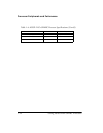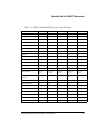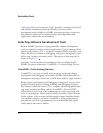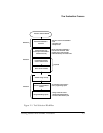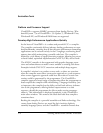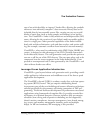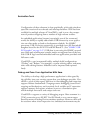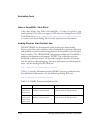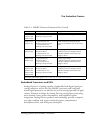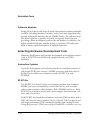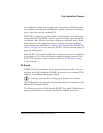
Evaluation Tools
2-6 Getting Started With SHARC Processors
Configuration of these elements is done graphically, with code wizards to
speed the creation of new threads and interrupt handlers. VDK has been
available for multiple releases of VisualDSP++ and is now a key compo-
nent of products shipping from a number of high-volume vendors.
As embedded applications become increasingly part of the connected
world, the ability to rapidly add reliable USB connectivity to an applica-
tion can often make or break a development schedule. For SHARC
processors, USB 2.0 device connectivity is provided via an EZ-Extender®
daughter board for the EZ-KIT Lite®/EZ-Board™. (See “SHARC USB
EZ-Extender” on page 2-47.) USB data is sent using the SHARC external
port. Bulk and asynchronous transfer modes are supported out of the box,
with USB-IF logo-certified embedded and host applications provided with
full source code.
VisualDSP++ uses incremental builds, multiple build configurations
(“Debug” and “Release,” for example), a syntax-coloring editor, and many
other code editing features. Makefiles can be imported and exported
freely.
Debug and Tune Your Application With Ease
The ability to develop a high performance application is often gated by
the visibility into your running system that your debugger provides. Visu-
alDSP++ excels in this regard, with best-in-class debugging and inspection
support. Robust fundamental C language source debugging (source-level
stepping and breakpoints, stack unwinds, local variable and C expression
support, memory and register windows) serves as a foundation upon
which multiple innovative and unique tools rest.
VisualDSP++ supports a variety of debugging targets. Most common is a
JTAG connection to an EZ-KIT Lite/EZ-Board or to a custom target
board by means of Analog Devices emulator products. However, there will
be occasions where closer inspection in a simulated environment may be



